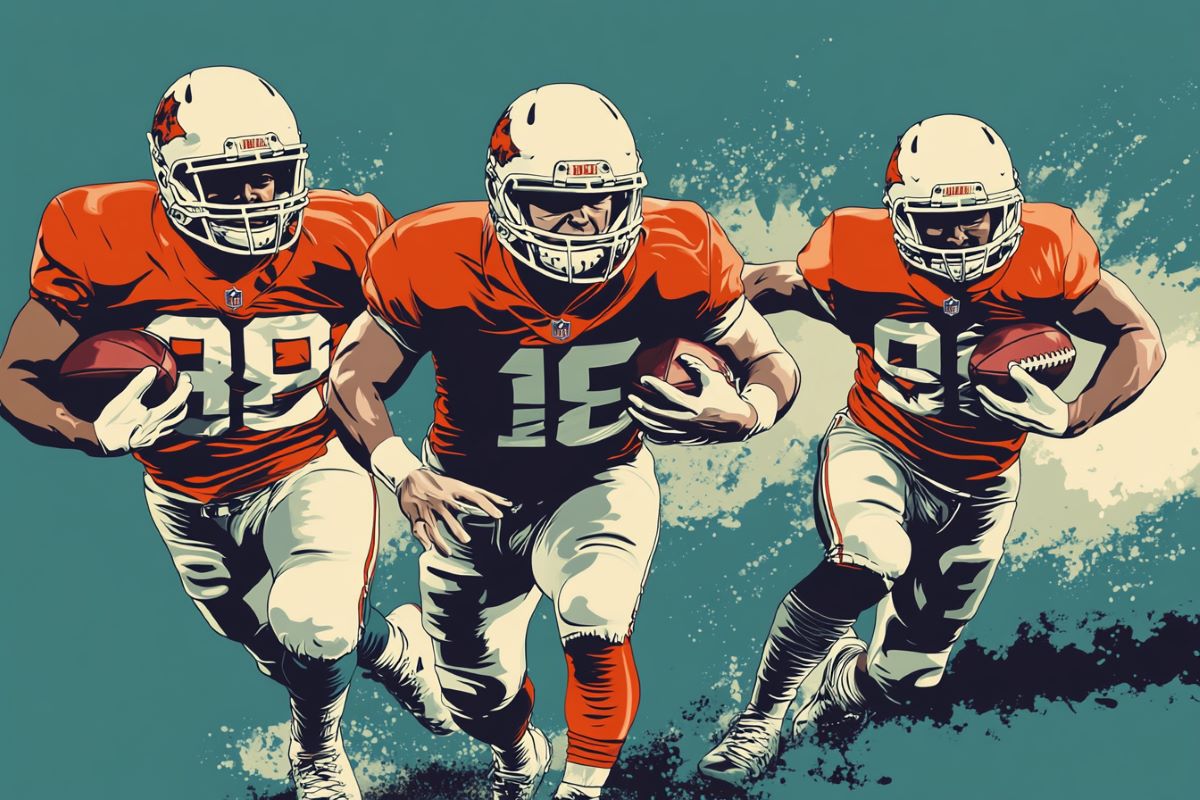Summary: A recent study examined the physical traits of NCAA football players, revealing significant differences in body composition, strength, and power across positions. Linemen showed higher body mass, while skill players exhibited greater efficiency in force transfer during jumps.
Despite these variations, no significant differences in flexibility or peak force were found among groups. These findings emphasize the potential for tailored training programs to optimize player performance based on position-specific needs.
Key Facts:
- Position-Specific Differences: Linemen had higher body mass, while skill players excelled in power efficiency during jumps.
- Training Implications: Results highlight the need for tailored regimens targeting position-specific traits.
- Future Research: Plans include expanding to Division I players and other sports for broader applications.
Source: University of Kansas
Even casual football watchers could tell you there are different body types based on the player’s position. Linemen are big with a lot of body mass, and wide receivers are smaller and faster, for example.
However, a new study from the University of Kansas is setting the stage to determine if there are more subtle differences in fitness and strength characteristics by position that are not obvious, even to the trained football eye.

If coaches and trainers could point to data that shows linebackers generally have higher upper body strength, while tight ends have a high level of flexibility or similar measures, that could lead to position-specific training and putting athletes in their most optimum positions to succeed.
Quincy Johnson, assistant professor of health, sport & exercise science, led a study that used state-of-the-art technology to assess key performance indicators within a group of college football players that found significant differences in body type, muscular strength and power, though not flexibility, by position type.
Offensive and defensive linemen, “big skill” positions such as linebackers and tight ends and skill players such as quarterbacks, wide receivers and safeties were the focus of the study.
Researchers conducted a battery of tests with 16 starters from a NCAA Division II football team. All were free of musculoskeletal injuries and had regularly taken part in strength and conditioning training.
“Even within the same sport you have different body types and different needs for the position they play,” Johnson said.
“Speed, mobility, flexibility all play a part in your ability to play football. Strength and power also play a huge role. We found significant differences among position groups in muscular power, as well as muscular strength. However, we didn’t find a difference in flexibility.”
Players in the sample were separated into offensive and defensive groups and were tested for body composition, including height, body mass and lean body mass. Then, further key performance indicators like movement capacity, muscular strength and power were measured.
Technology including markerless motion capture and force plates measured movement capacity during squats, strength via isometric mid-thigh pulls, power via jumping exercises and other similar measures.
As hypothesized, the researchers found significant differences in body composition, with linemen having more body mass than other big skill players. And the latter positions jumped higher and more efficiently transferred force during jumps, exhibiting different types of characteristics of athleticism between the positions.
Movement capacity, however, did not prove to have significant differences by position.
Specific measures of muscular strength and power also varied between position groups, but measures of peak force did not, the researchers noted. That finding emphasizes the importance of developing absolute strength, they added.
Johnson, a former collegiate football player and strength and conditioning coach, described the study as a call to action.
By showing that different body compositions, movement capacities and types of strength and power are scientifically measurable, it could set the stage for research that can maximize desired characteristics in the name of improving performance long-term.
Further research is needed to determine how best to develop the necessary characteristics by position.
Written by Johnson, Yang Yang, Dimitrije Cabarkapa and Andrew Fry of KU; Shane Stock, Dalton Gleason, Kazuma Akehi, Dayton Sealey and Clay Frels of the University of Nebraska-Kearney; and Douglas Smith of Oklahoma State University, the study was published in The Journal of Functional Morphology and Kinesiology.
“I hope to help answer questions coaches have and hopefully move the field in some new directions,” Johnson said.
“The big question is, ‘Can we assess abilities in this group of athletes?’ Once we have this information, can we analyze it in a way that over time improves performance?”
Johnson, who began playing football at age 5 in his native Oklahoma, had questions about training camp when he reached the collegiate level, including why the first few and last few days of training camp seemed to be the most strenuous and taxing on the body.
While he never suffered serious injuries, he saw teammates who did or quit the sport for various reasons. By bringing a sport science approach to such questions, he hopes to help athletes, coaches, trainers and others use data to answer those and others about how to maximize performance.
Such data could contribute to training regimens designed specifically for defensive backs to reach their full potential or to help linemen stay on the field or avoid injuries, for example.
Future work will examine data from Division I football players and those in other sports as well.
The authors write that the findings can also help those beyond athletes and coaches, including strength and conditioning professionals, sport scientists, sports medicine professionals, nutritionists and registered dietitians.
Johnson’s research is part of the work by the Jayhawk Athletic Performance Laboratory, a member of the Wu Tsai Human Performance Alliance. The alliance works to transform and improve human health through the understanding of peak performance.
While the majority of understanding of human health comes from the study of disease, the research at KU and partners studies peak athletic performance to help people achieve optimal health and well-being.
About this strength and neuroscience research news
Author: Mike Krings
Source: University of Kansas
Contact: Mike Krings – University of Kansas
Image: The image is credited to Neuroscience News
Original Research: Open access.
“Key Performance Indicators for College American Football Starters: An Exploratory Study” by Quincy Johnson et al. Journal of Functional Morphology and Kinesiology
Abstract
Key Performance Indicators for College American Football Starters: An Exploratory Study
Objectives: The purpose of this study was twofold: (a) to profile body composition and physical fitness characteristics of collegiate American football starters and (b) to examine differences in key performance indicators across position groups. These indicators included select measures of body composition, joint kinematics, as well as muscular strength and power.
Methods: Sixteen National Collegiate Athletic Association (NCAA) Division-II American football athletes (age: 22.25 ± 1.1 years; height: 183.75 ± 7.8 cm; and body mass: 97.22 ± 20.39 kg) volunteered to participate in this study. A Kruskal–Wallis one-way analysis of variance by ranks test with Dunn test post-hoc adjustments was used to examine position differences between Line (n = 3), Big Skill (n = 6), and Skill (n = 7) position groups with α priori set at p < 0.05.
Results: The findings of this study suggest that significant differences in body composition (p = 0.004), muscular strength (p = 0.01), and muscular power (p = 0.03) exist between position groups. However, no significant differences were observed in joint kinematics as assessed by the bilateral squat test (p > 0.05).
Conclusions: Therefore, key findings from this study suggest that although significant differences in body composition, muscular strength, and muscular power exist, an emphasis should be placed on the regular assessment, development, and maintenance of optimal joint kinematics within collegiate American football populations as this appears to be a shared key performance indicator among starters.






